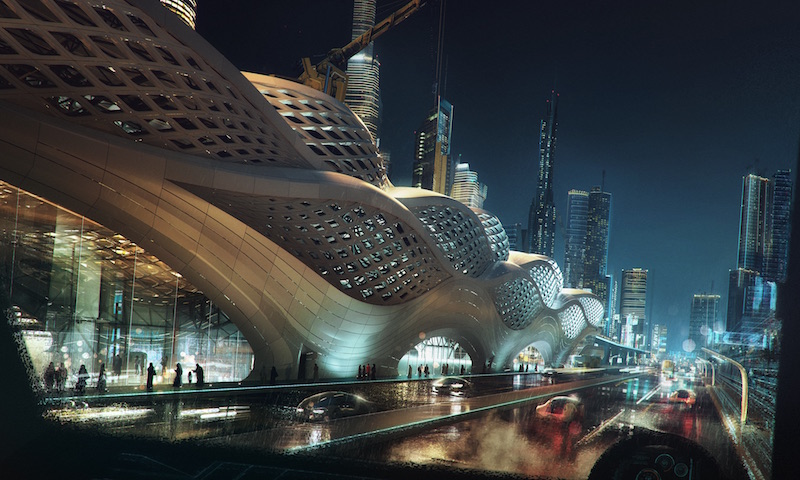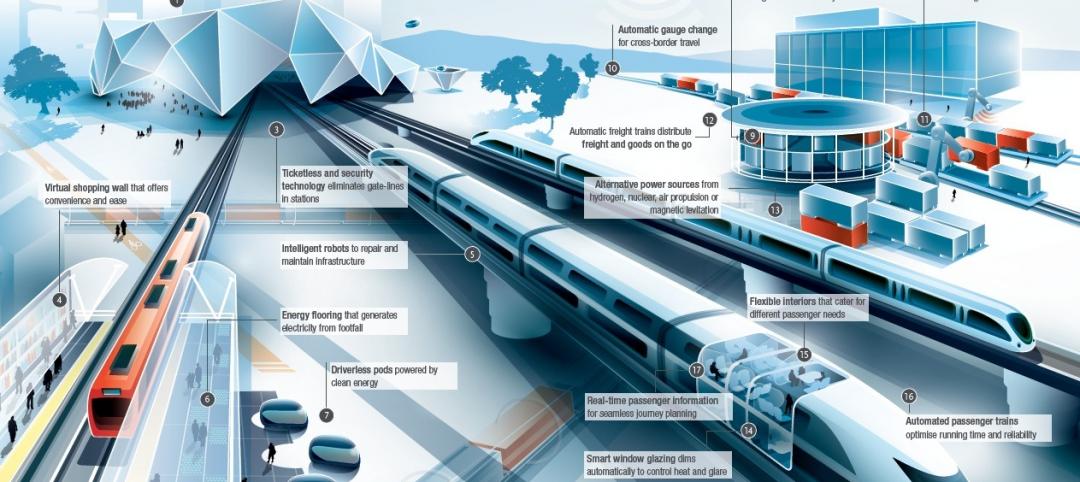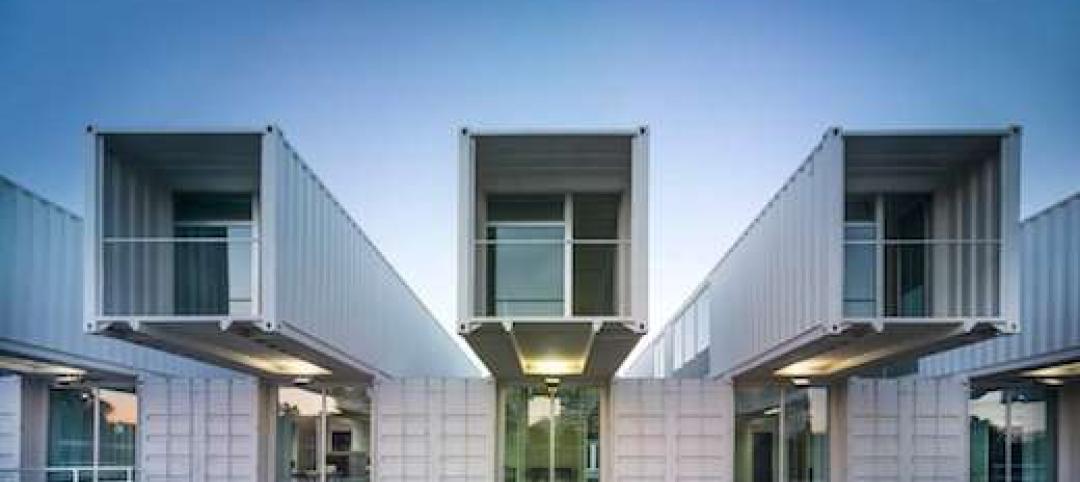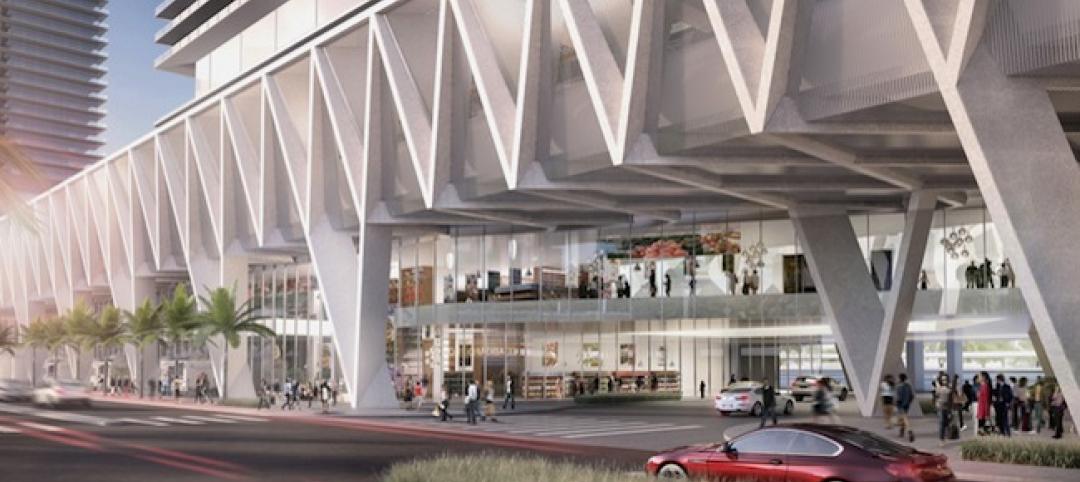Designed by Zaha Hadid Architects, the new King Abdullah Financial District (KAFD) Metro Station in Riyadh, Saudi Arabia will serve as a key interchange on the new Riyadh Metro network for Line 1 and the terminus of Line 4 and Line 6.
The 45,000-sm complex will include four above ground levels and two below ground (car parking) and will be integrated within the urban context of the financial district. The most striking feature of the new metro station is the façade, meant to represent patterns generated by desert winds.
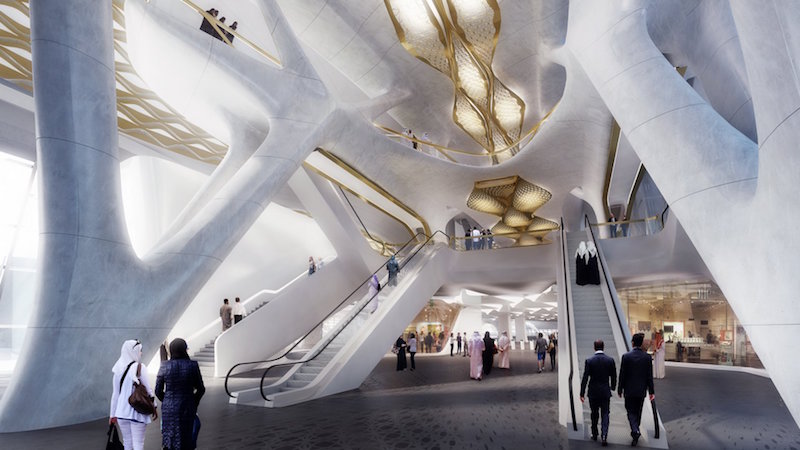 Courtesy ZHA.
Courtesy ZHA.
The façade is design-engineered by Newtecnic to reduce solar gain and produce air currents that help cool the building. The firm’s research team had to develop new algorithms to achieve this level of performance. Additionally, Newtecnic had to invent new adjustable building components and fixing methods for the structure’s self-supporting, 650-foot-long concrete-composite walls and roof.
The result of this world-first-façade and the new techniques used to create it is an undulating, futuristic building that will be delivered for the price of a more traditional structure and last twice as long.
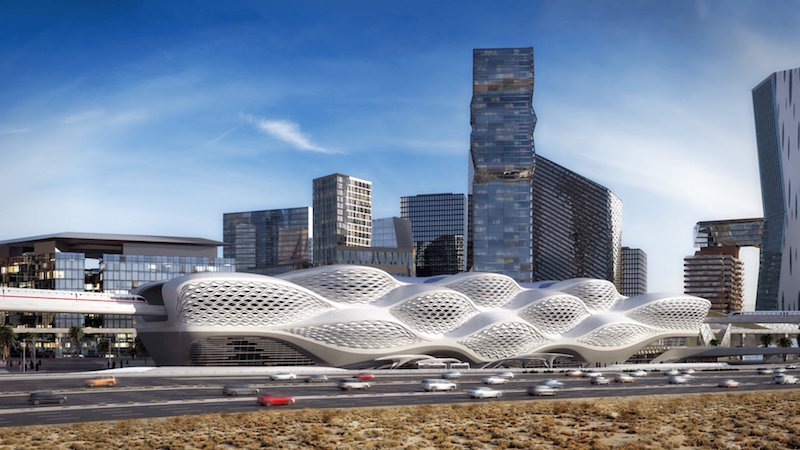 Courtesy ZHA.
Courtesy ZHA.
The KAFD Metro Hub is designed to support Riyadh’s expected 50% growth over the coming years and is part of a new citywide transport system that comprises six metro line, 85 stations, and more than 100 miles of track.
BACS Consortium is the general contractor for the project, which is slated for completion in 2018.
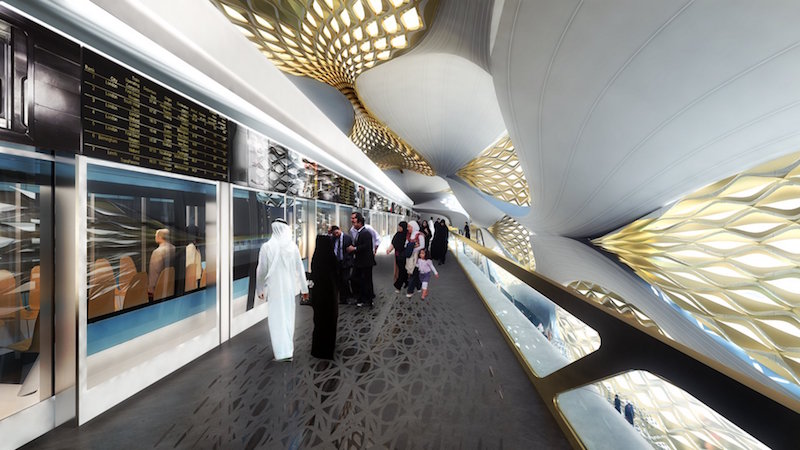 Courtesy ZHA.
Courtesy ZHA.
Related Stories
| Jun 30, 2014
Research finds continued growth of design-build throughout United States
New research findings indicate that for the first time more than half of projects above $10 million are being completed through design-build project delivery.
| Jun 30, 2014
Arup's vision of the future of rail: driverless trains, maintenance drones, and automatic freight delivery
In its Future of Rail 2050 report, Arup reveals a vision of the future of rail travel in light of trends such as urban population growth, climate change, and emerging technologies.
| Jun 18, 2014
Arup uses 3D printing to fabricate one-of-a-kind structural steel components
The firm's research shows that 3D printing has the potential to reduce costs, cut waste, and slash the carbon footprint of the construction sector.
| Jun 12, 2014
Austrian university develops 'inflatable' concrete dome method
Constructing a concrete dome is a costly process, but this may change soon. A team from the Vienna University of Technology has developed a method that allows concrete domes to form with the use of air and steel cables instead of expensive, timber supporting structures.
| Jun 6, 2014
Shipping container ship terminal completed in Spain
In Seville, Spain, architectural firms Hombre de Piedra and Buró4 have designed and completed a cruise ship terminal out of used shipping containers.
| Jun 2, 2014
Parking structures group launches LEED-type program for parking garages
The Green Parking Council, an affiliate of the International Parking Institute, has launched the Green Garage Certification program, the parking industry equivalent of LEED certification.
| Jun 2, 2014
SOM unveils plans for Miami transit hub
The elevated station will be a key portal within All Aboard Florida’s rail system, the nation's only privately owned, operated, and financed rail network.
| May 29, 2014
7 cost-effective ways to make U.S. infrastructure more resilient
Moving critical elements to higher ground and designing for longer lifespans are just some of the ways cities and governments can make infrastructure more resilient to natural disasters and climate change, writes Richard Cavallaro, President of Skanska USA Civil.
| May 20, 2014
Kinetic Architecture: New book explores innovations in active façades
The book, co-authored by Arup's Russell Fortmeyer, illustrates the various ways architects, consultants, and engineers approach energy and comfort by manipulating air, water, and light through the layers of passive and active building envelope systems.
| May 19, 2014
What can architects learn from nature’s 3.8 billion years of experience?
In a new report, HOK and Biomimicry 3.8 partnered to study how lessons from the temperate broadleaf forest biome, which houses many of the world’s largest population centers, can inform the design of the built environment.


